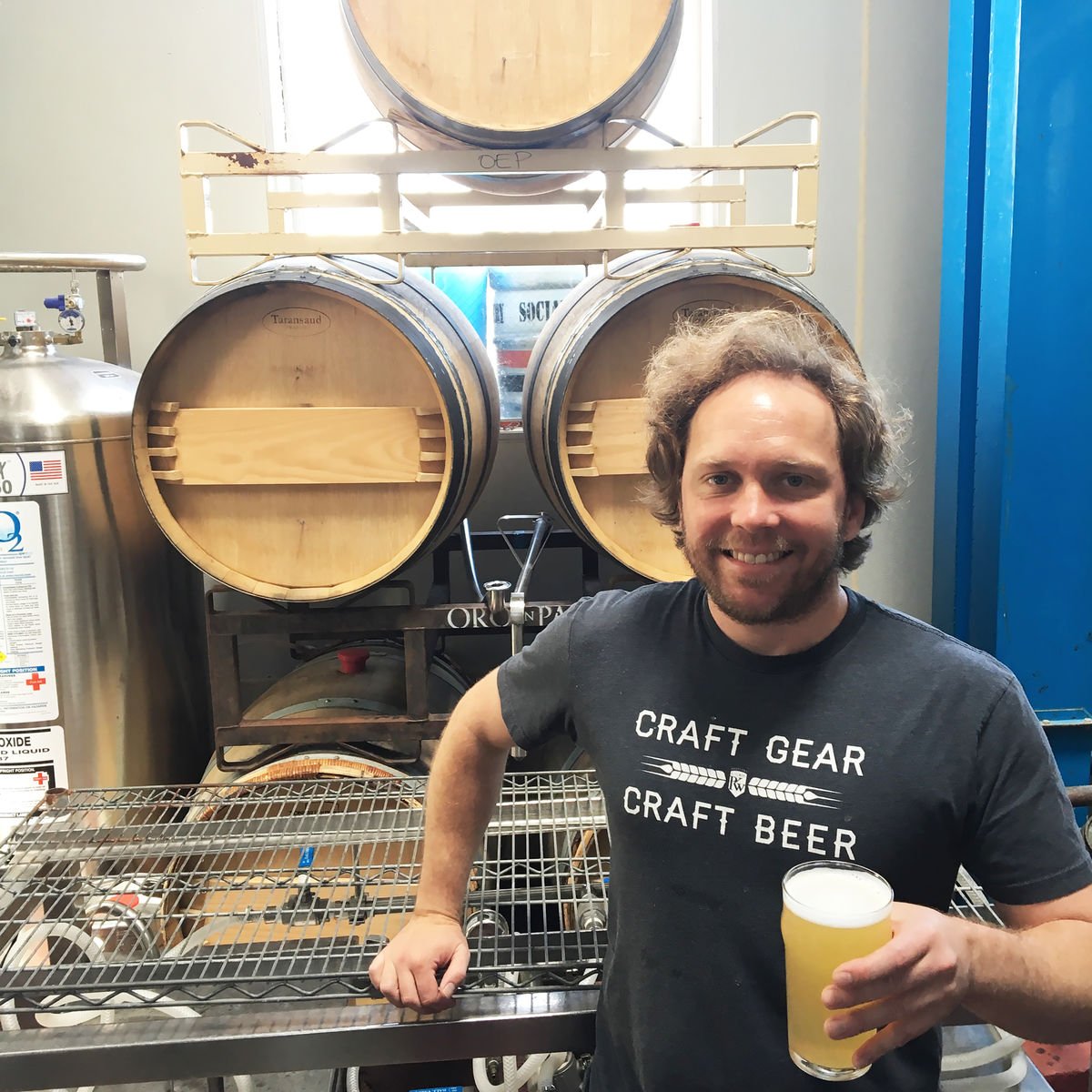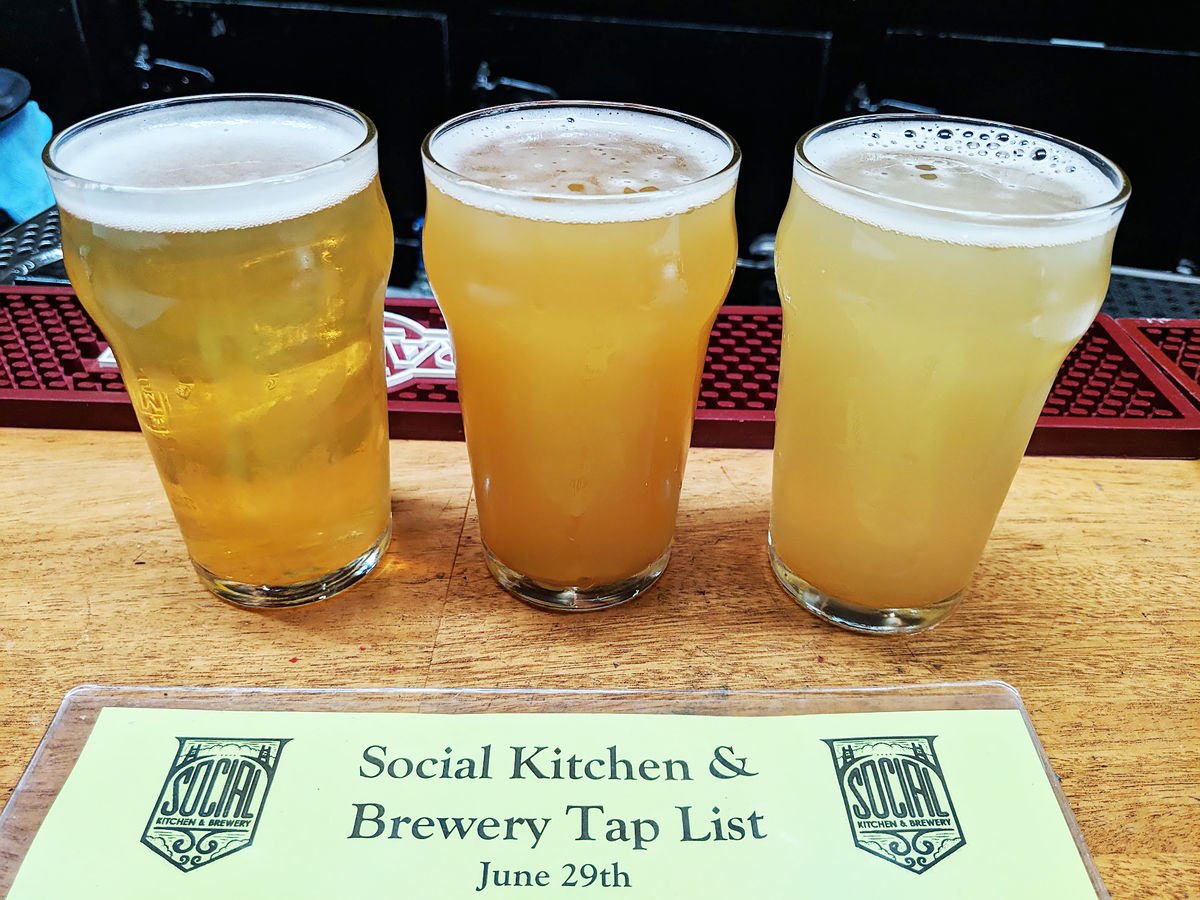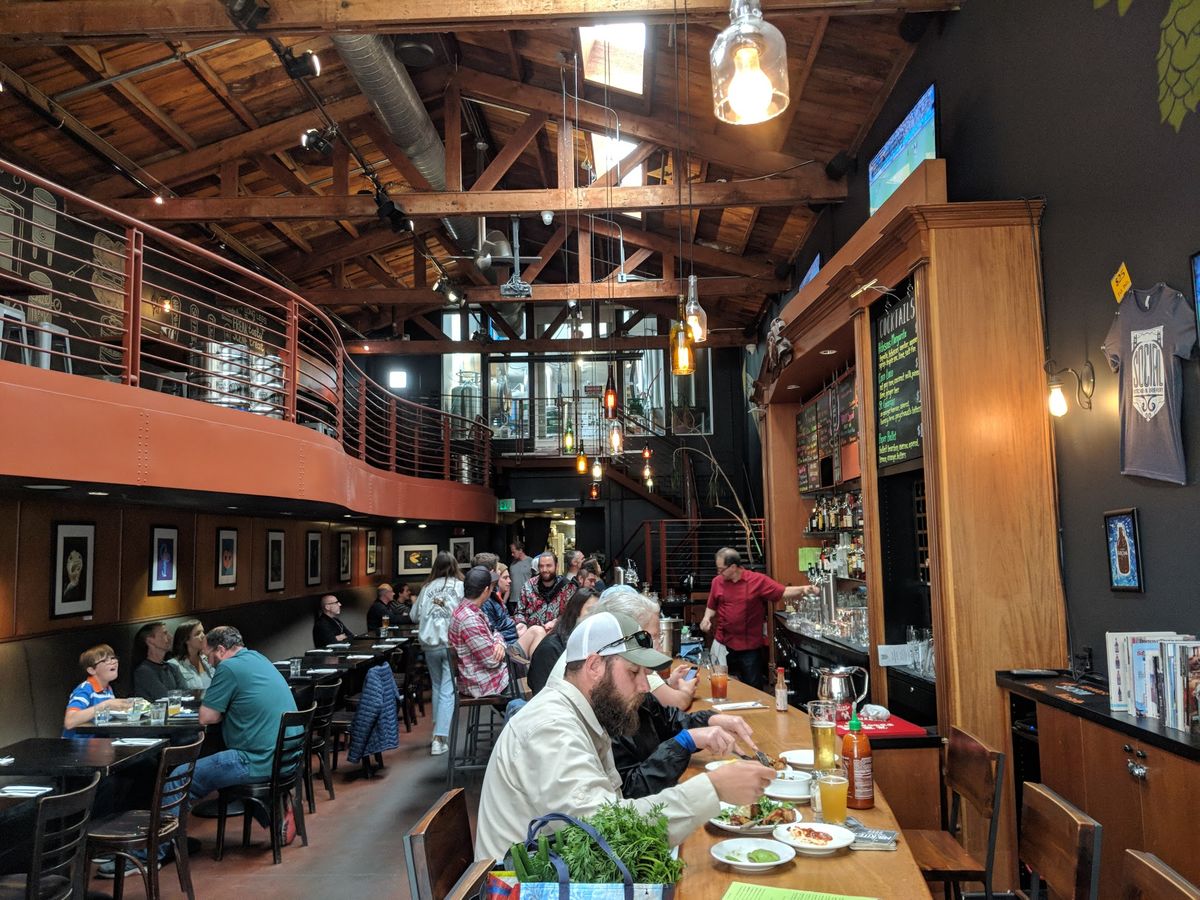Start 14-Day Trial Subscription
*No credit card required

What is Brut IPA?
In the seemingly endless ways brewers are trying to make an IPA that’s different, either so they can offer multiple IPAs or differentiate themselves from the brewery down the street, a virtual plethora of sub-types have emerged in recent years leading many to question what is Brut IPA? First IPAs split into the traditional English type and the more hop-forward American IPA, distinguished by brasher, more in-your-face hop character. Then brewers decided if a lot of hops is good, more hops is better and the birth of double, or imperial, IPAs took place in the late 1990s, although its origin is even earlier when Vinnie Cilurzo, then at his first brewery in Temecula, California — Blind Pig Brewing — created the first Double IPA in 1994. That was followed by the Triple IPA, now called Pliny the Younger and released each February to much fanfare.
But adding hops will only take you so far. 100 IBUs is the threshold for measuring them, so any beer claiming to be above that amount is basing that on a math calculation, not a formal analysis of the beer. But like other beers, strength and bitterness is only part of the flavor profile, there’s also process and adjuncts, which can be combined in an endless variety to produce different results while technically remaining under the umbrella of the IPA definition.
That’s led to some interesting beers, and many of them have gone on to be popular enough to become sub-types of IPAs, with enough people making versions of them that they’ve been defined for competitions by the BJCP and the Brewers Association. There are now at least over a dozen reasonably well-defined sub-types of IPA. When the BJCP updated their guidelines in 2015, they added Belgian, Black, Brown, Red, Rye and White IPA under the Specialty IPA banner. And the BA last year added arguably the most popular new kind, “Juicy or Hazy India Pale Ale,” as a separate category for the Great American Beer Festival.
Then in late 2017, Kim Sturdavant, who at that time was the brewmaster at Social Kitchen & Brewery in San Francisco’s Inner Sunset neighborhood, had a “Eureka” moment and created what’s become the next new type of IPA, the Brut IPA.
For several years, Sturdavant had been adding a relatively common enzyme — amylase glucosidase — to his Triple IPA in order to keep it from becoming overly sweet. It worked well for that purpose, but as far as he knew, no one was using it to brew an IPA, which gave him an idea. Not one to rush into anything, he let the idea rattle around in his head for a year or so, and in November of 2017, decided he was ready to give it a try.

For several years, Sturdavant had been adding a relatively common enzyme — amylase glucosidase — to his Triple IPA in order to keep it from becoming overly sweet. It worked well for that purpose, but as far as he knew, no one was using it to brew an IPA — yet.
The goal was to make a beer that was lighter in color, drier and with no residual sugars, allowing the hops to shine, but without any bitterness. He thought that he could accomplish that by using that brewing enzyme (amylase glucosidase). Enzymes are essentially proteins, but ones that convert the barley into sugars that the yeast feed on and make alcohol. That’s an oversimplification, of course, and they occur naturally but don’t break down them all, leaving behind residual sugars that give beer its sweetness. But with a judicious use of the enzyme, he could keep his IPA from being too sweet and finish bone dry, with a bright color, though still slightly hazy and very aromatic.
He ended up using “20 percent rice, 20 percent corn and the rest pilsner malt.” While many purists may wince at such adjuncts, they’re not to make the beer cheaper, but are for the purpose of both lightening the color and providing subtle additional flavors. From the corn, the mouthfeel become a little creamier and the rice adds a touch of coconut to the flavor profile.
Sturdavant called that first attempt “Hop Champagne Extra Brut IPA,” taking a page from the world of champagne, where brut indicates unsweetened, but especially its dryness. That led to this type of beer becoming known more simply as Brut IPA. After refining the beer a bit more to his liking, he renamed it “Puttin’ on the Spritz,” but the original idea, and name, stuck.
Their defining characteristics have evolved into being usually described as bone dry, lighter in color compared to other IPAs and effervescent and sparkling. They’re loaded with hop character, but have almost no bitterness, making them very refreshing. But that’s a fairly general description, with such a new idea of what the beer should be, many brewers have done their own experimentation into what they think a Brut IPA should taste like. The result is that there are lots of variations in these beers considering themselves a Brut IPA as the style struggles to define itself. Most do hit the majority of the typical characteristics, while others deviate to varying degrees as some take the original notion and run with it. That makes it difficult to be certain what any Brut IPA will taste like when you order one, but it’s also an exciting time as the Brut IPA is evolving before our eyes, or taste buds.
Sturdavant himself has become something of an evangelist for the new sub-style, and in the Bay Area, and beyond, as brewers came to him about Brut IPA, he’s willingly helped spread them, and has even done numerous collaboration Brut IPAs to get them started. For example, he’s done collaboration Brut IPAs with Eagle Rock Brewing, Triple Voodoo Brewing, Temescal Brewing, Cellarmaker and Seven Stills.
While Sturdavant has recently left his position at Social Kitchen and is currently consulting with other breweries as he contemplates his next brewing job, his “Puttin’ on the Spritz” is still available at the brewpub, and likely will continue to be brewed there, given its popularity. It’s 6.1 percent ABV and is very light straw with a tart grapefruit nose with a zesty mouthfeel and clean throughout. The hops are fresh and vibrant but not bitter. The finish, of course, is very dry. At least one of Sturdavant’s collaborations is canned, “Caviar Dreams,” which he brewed with Seven Stills Brewing in San Francisco.
Quite a few breweries have started brewing their own take on Brut IPA, with Beer Advocate, who recently gave the style it’s only category listing, has 812 reviewed, while an Untappd search reveals over 2,000. But it remains a beer that’s primarily available on draft only. And that’s for good reason. Like many beers where the fresh hop aromas and flavors are key, Brut IPAs are best when young, which generally means the optimal way to enjoy them is on tap.

Sturdavant called that first attempt “Hop Champagne Extra Brut IPA,” taking a page from the world of champagne, where brut indicates unsweetened, but especially its dryness. That led to this type of beer becoming known more simply as Brut IPA.
Several breweries are packaging their Brut IPAs, just make sure they’re as newly packaged as possible, and don’t wait to enjoy them. These are not beers that should be aged for any length of time.
Sierra Nevada Brewing, for example, released their Brut IPA in 12-oz. bottles as a spring seasonal this year. Their version uses two-row pale malt along with some wheat and acidulated malt and is finished with Chinook, Comet, Crystal and Simcoe hops, with Simcoe providing the majority of the bitterness.
At Drake’s Brewing, in the East Bay across the Bay from San Francisco, one of their brewers spent a day with Sturdavant and came back to Drake’s, telling brewmaster John Gillooly that they should make one, too. The trick for them, as for every brewery, is that Brut IPAs are not a typical style where you simply need to write your own recipe and brew it. With Brut IPAs, as Gillooly puts it, “the process is key to the beer in such a core way, beyond just developing a recipe. Finding the best way to do it on our system was definitely a learning experience.”
They started experimenting with pilsner malt and flaked corn, just like Social Kitchen, but had to decide to add the enzyme in either the mash tun or the fermenter. Sturdavant, in his early batches, added the amylase glucosidase during fermentation, but more recently has begun adding it to the mash. Drake’s ultimately decided on adding it initially during fermentation, which allowed for more contact time, and a drier finish. But that produced another problem, since they “found it rather difficult to balance extreme dryness with bitterness, and CO2 bite, to present a beer that wasn’t overly astringent.” So for the next brew, they instead added the enzymes into the mash tun, and that, says Gillooly, “did the trick.” Doing it that way took the beer “to an apparent attenuation of zero, by far making it the driest beer we make, but still leaving a few longer-chain dextrins that left just enough mouthfeel to balance the hop and the carbonation.” The result was Drake’s Brewing’s “Brightside Extra Brut IPA,” which is available now in 12-oz. bottles.
Also, New Belgium Brewing has a bottled Brut IPA, as does Brewery Ommegang. Anderson Valley Brewing has a canned Brut IPA, and so does Ska Brewing, called “Moral Panic,” along with Sixpoint Brewery, whose version is called “Sparkler.” Also in bottles is Bear Republic’s “Brut Squad IPA,” and Two Roads’ “Dry & Mighty Brut IPA.”
Since Brut IPAs are trying to emulate champagne, at least in part, it seems obvious that mixing with orange juice to simulate a kind of mimosa should work well as a beer cocktail, and some brewers are even using hops or other adjuncts, like oranges or blood orange, that exhibit citrus-like character to enhance that familiar taste combination.
While some see the new Brut IPA as the West Coast’s answer to hazy, or New England, IPA, it doesn’t appear to be that simple. Brut IPAs are hopped similarly, and both want an end product that’s not overly bitter. Bruts are lighter in color, and decidedly less sweet, but can also be somewhat cloudy, just not as impenetrable as a Heady Topper. They’re also as bubbly and highly carbonated as a Belgian Strong but, without any added spices, are drier and with more hop character.
Right now, Brut IPA is a sub-type of IPA that’s in its infancy and is still evolving. It’s different things to different brewers. Although the originator of Brut IPA, Kim Sturdavant, has a pretty good idea of what it should be — very dry, effervescent, and light-colored, with low bitterness, and alcohol, but bursting with hop character — he’s as excited as the rest of us to see how other brewers will interpret a Brut IPA.

Kim Sturdavant, has a pretty good idea of what the Brut IPA style should be — very dry, effervescent, and light-colored, with low bitterness, and alcohol, but bursting with hop character — he’s as excited as the rest of us to see how other brewers will interpret the style.
(Header Photo Courtesy Twitter/Hills Craft Beer Pleasant View)



